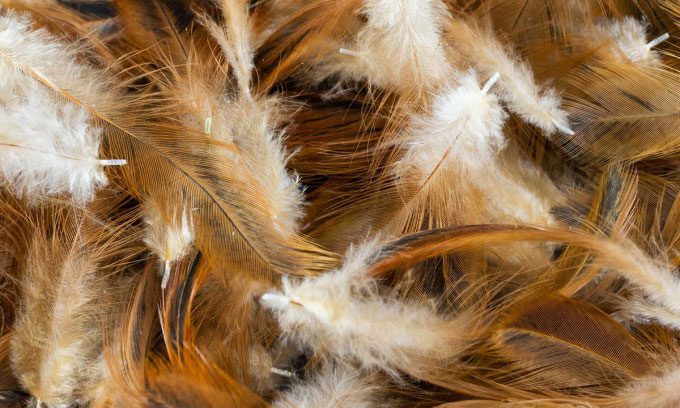Researchers Utilize Waste Chicken Feathers to Create Useful Keratin Membranes for Hydrogen Fuel Cells and Electrolysis Processes.
Hydrogen is a clean and promising energy source. Hydrogen fuel cells generate electricity by using semipermeable membranes. However, these membranes are typically made from expensive, non-eco-friendly, toxic “forever chemicals” that pose cancer risks.

Waste chicken feathers can help produce clean energy. (Photo: Adobe Stock)
A research team from the Swiss Federal Institute of Technology Zurich (ETH Zurich) and Nanyang Technological University Singapore (NTU) has discovered a new method for producing these membranes, as reported by Interesting Engineering on October 21. They extracted keratin protein from waste chicken feathers and transformed it into nanofibers known as amyloid through an eco-friendly process. These tiny keratin fibers are then used for fuel cell membranes.
Annually, approximately 40 million tons of chicken feathers are disposed of, which not only generates massive CO2 emissions but also produces toxic gases like SO2. Utilizing chicken feathers to produce hydrogen energy presents an effective way to manage waste from the poultry industry.
However, challenges remain before hydrogen can become a stable, sustainable energy source. “Hydrogen is the most abundant element in the universe, but unfortunately, it is not the case on Earth,” stated Raffaele Mezzenga, a Professor of Food and Soft Materials at ETH Zurich. Here, hydrogen does not exist in its pure form and must undergo a production process that consumes significant energy.
The new membrane is promising not only for use in fuel cells but also in the electrolysis process (using electricity to split water into hydrogen and oxygen). In this process, direct current passes through water, causing oxygen to form at the positively charged anode, while hydrogen escapes at the negatively charged cathode. Pure water is not conductive enough and often requires the addition of acid. However, the new membrane allows protons to pass through, enabling particles to move between the anode and cathode, thereby facilitating efficient electrolysis even in pure water.
Next, the expert team will test the stability and durability of the new keratin membrane and make improvements if necessary. They have applied for a patent and are seeking investors or companies to help continue developing the technology and commercializing it.


















































